Overview
Dibby is a chatbot assistant that leverages AI to help users troubleshoot printer errors, streamline the print refund process, and generate automated logs for the IT staff.
Role
Product Design lead, project management
Timeline
2 months
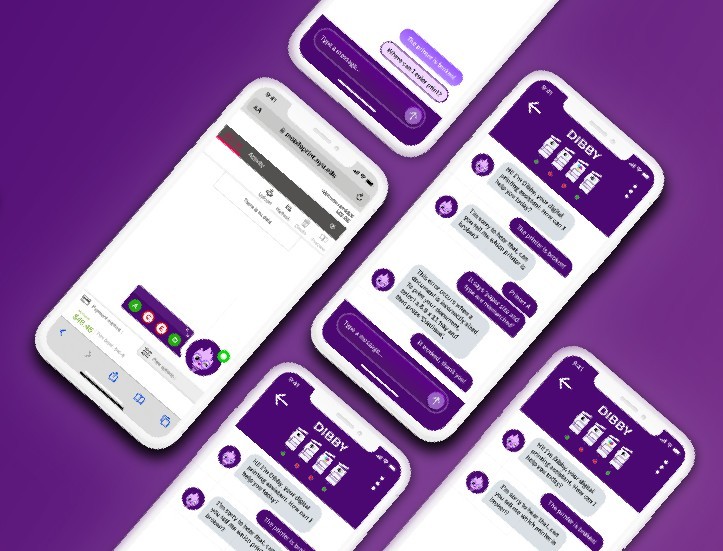
Problem
Where students struggle
72% of NYU Tandon students face printer failures--most give up, or risk breaking it further.
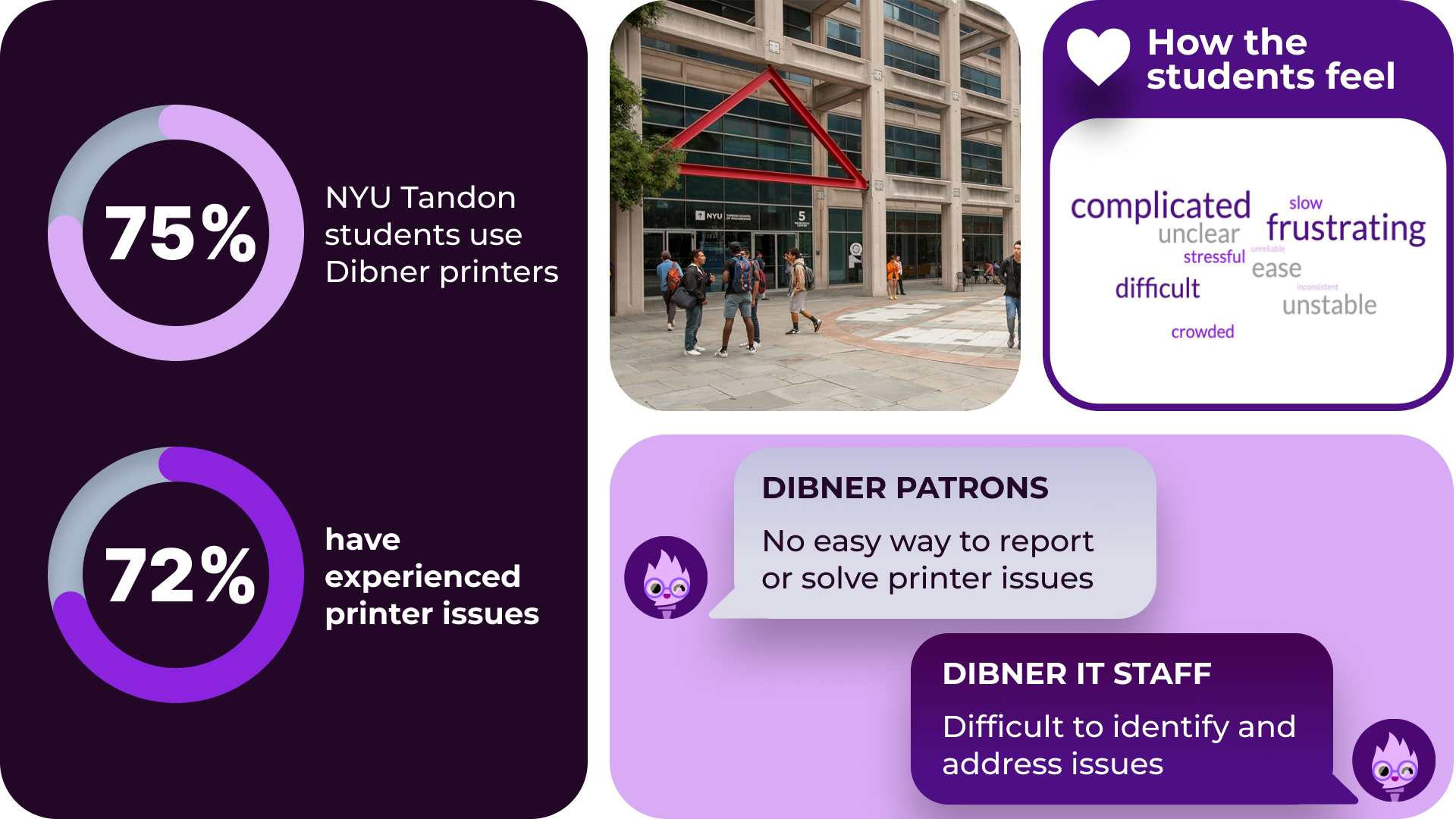
Research
Observing (and loitering) by the printers
We used quantitative and qualitative research methods: 48 surveys, 10 user interviews, personas, and flowcharts.
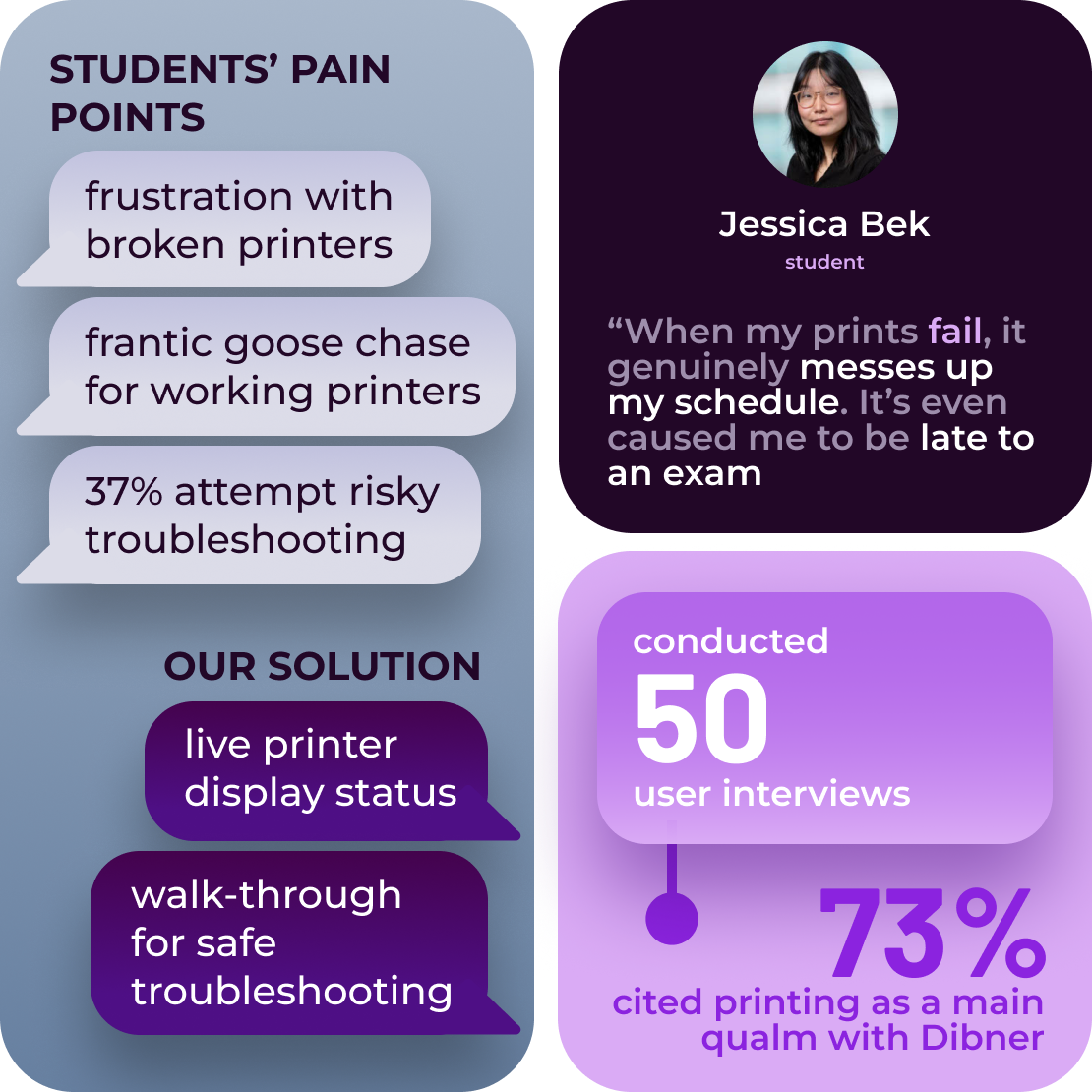
User Persona
The surveys initially identified and quantified common behaviors in users, while user interviews helped us uncover users’ pain points.

Low-fidelity designs + branding
Giving our chatbot a personality
Dibby's librarian persona--friendly,
trustworthy, and approachable--is designed to put users at ease and
keep them engaged, making users more likely to provide useful feedback.
Since NYU rebranded from Bobcats to Violets, we avoided animal mascots to keep the chatbot
consistent with the university’s identity.
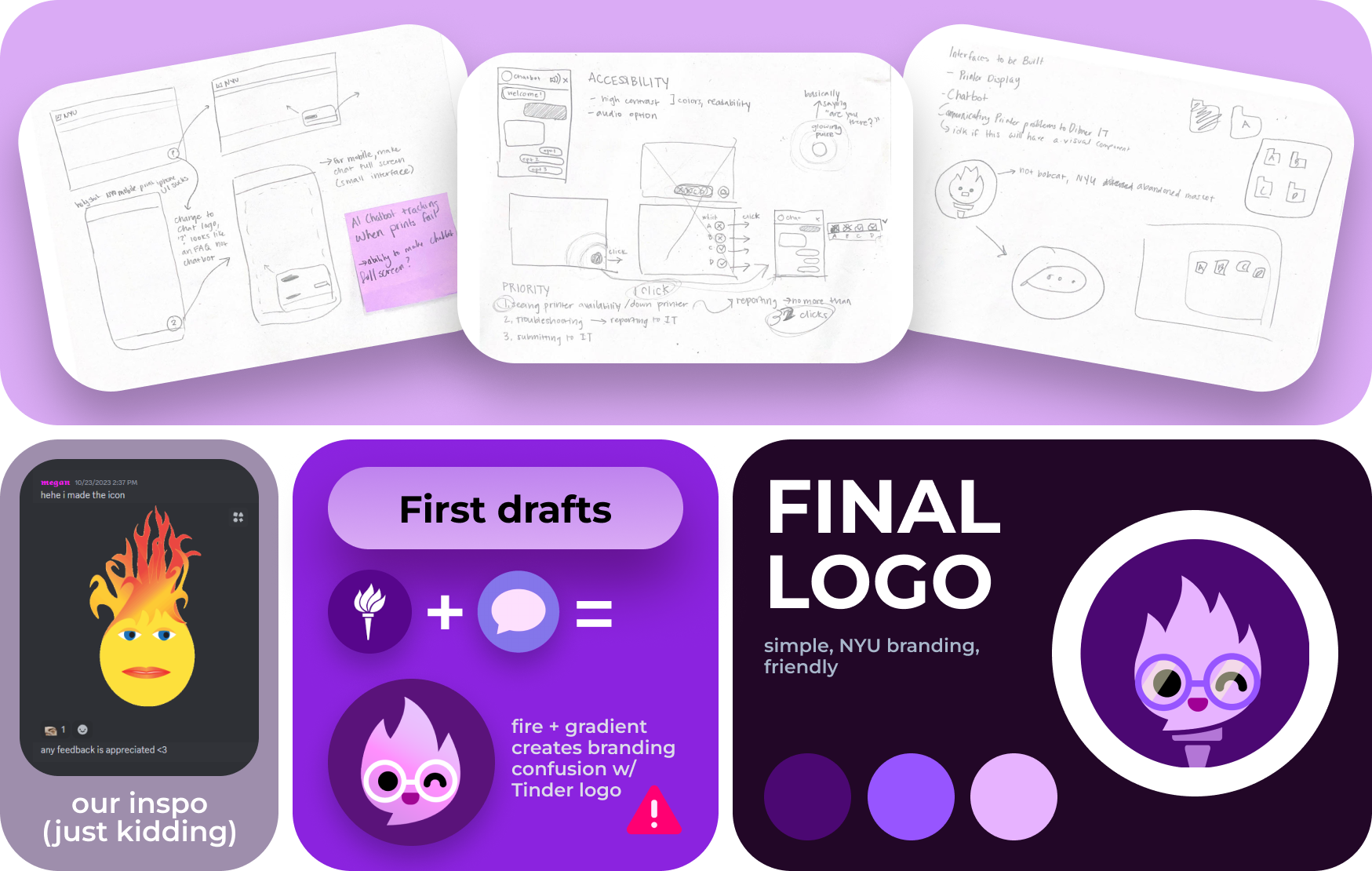
Mapping out the conversation
We designed a “never say ‘no’” interaction flowchart, based in customer service ideology.
When users are faced with an error or “no results found,” they get frustrated
and might try fixing it themselves, leading to damages.
If our chatbot has no further solutions, it offers an action item
(i.e. creating a ticket, or requesting in-person assistance).
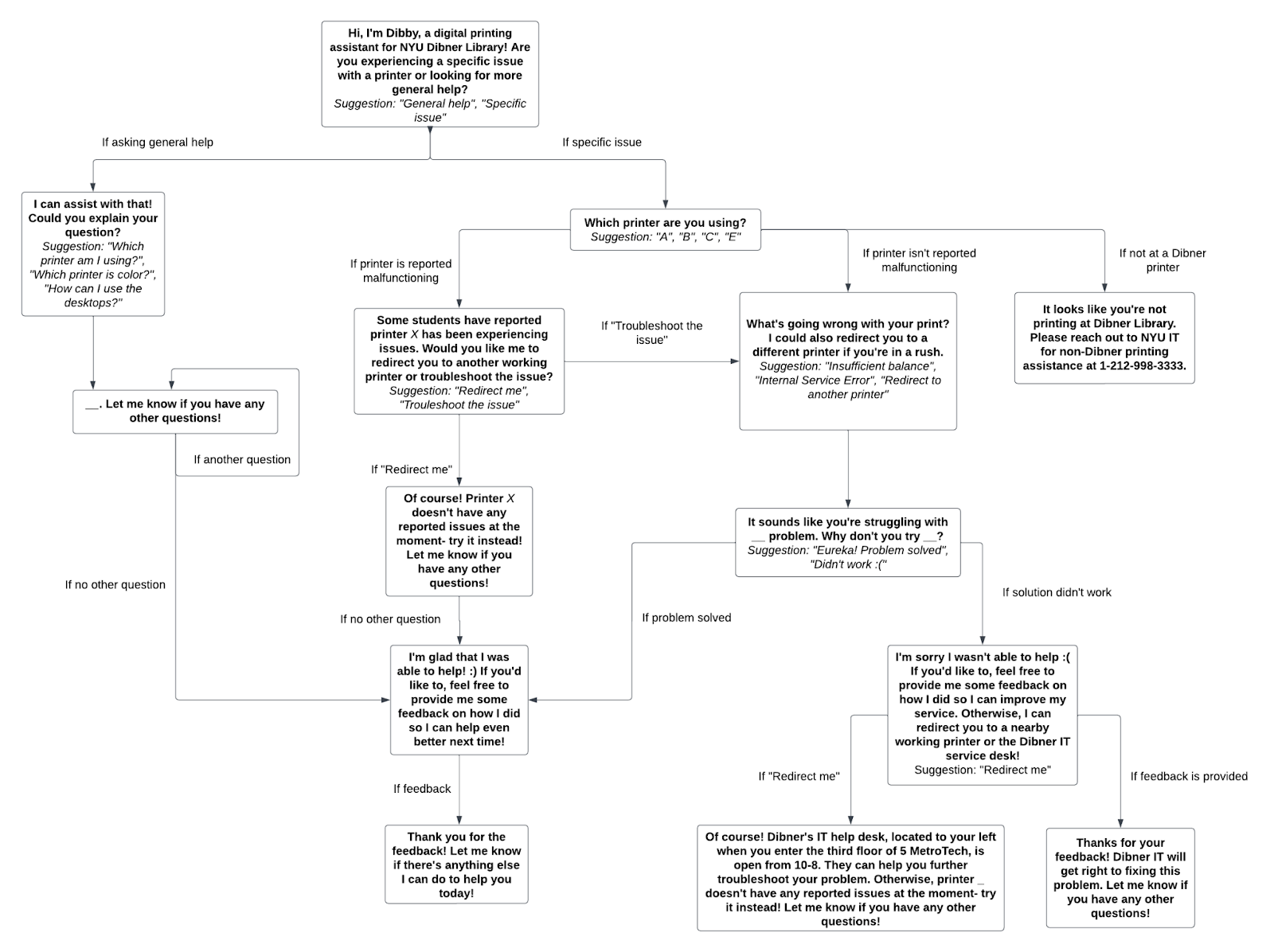
Testing & Feedback
Iterative improvement
Our team conducted 9 user interviews and 3 AB tests with our designs. During AB testing,
students were presented with a simple printer error–-no one successfully fixed or reported the issue.
However, with Dibby, every student was able to successfully troubleshoot the error within minutes.
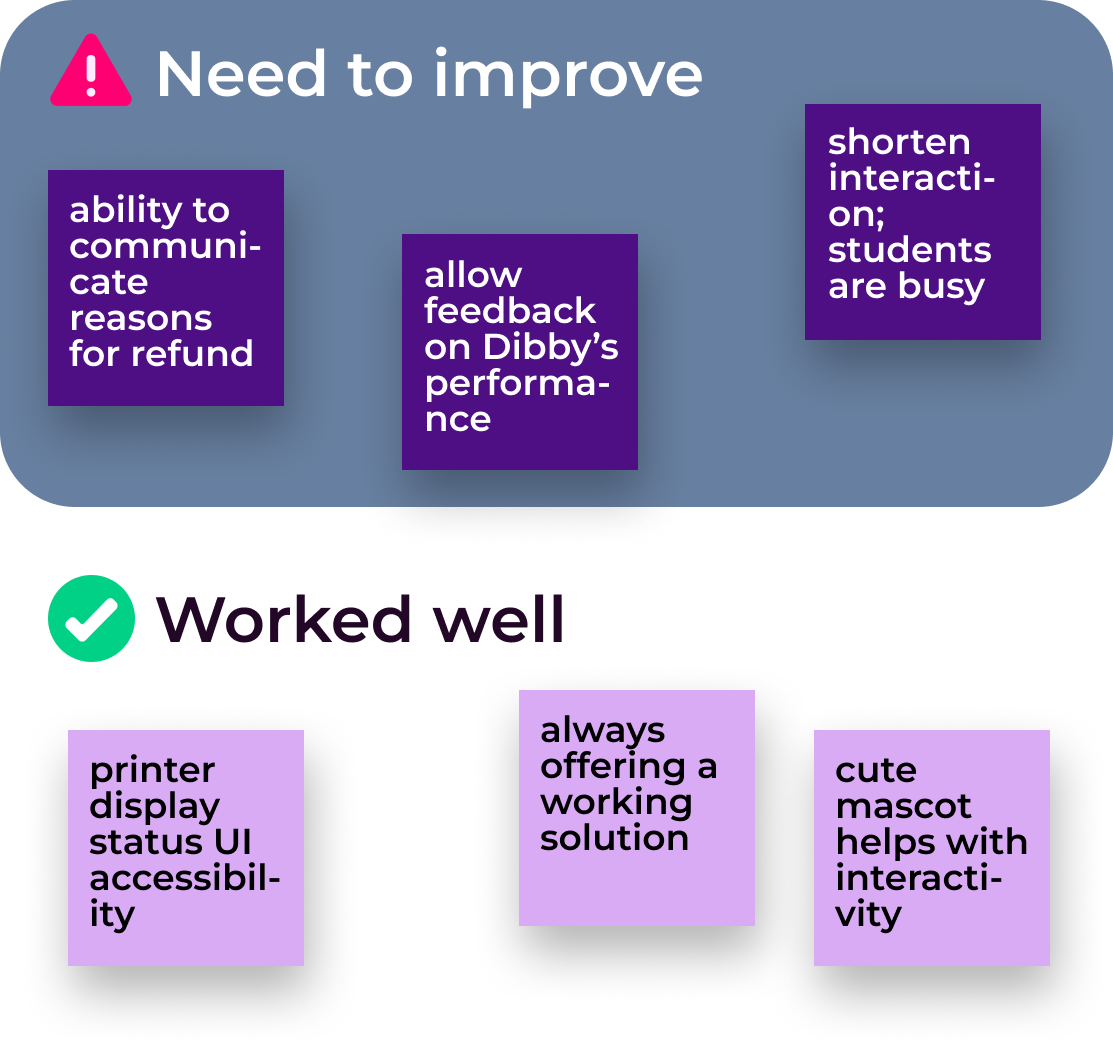
Hi-fidelity design
Meet Dibby
We confirmed our product’s user-friendliness with students and staff, including the Director of Dibner Library, ensuring seamless navigation for first-time users.
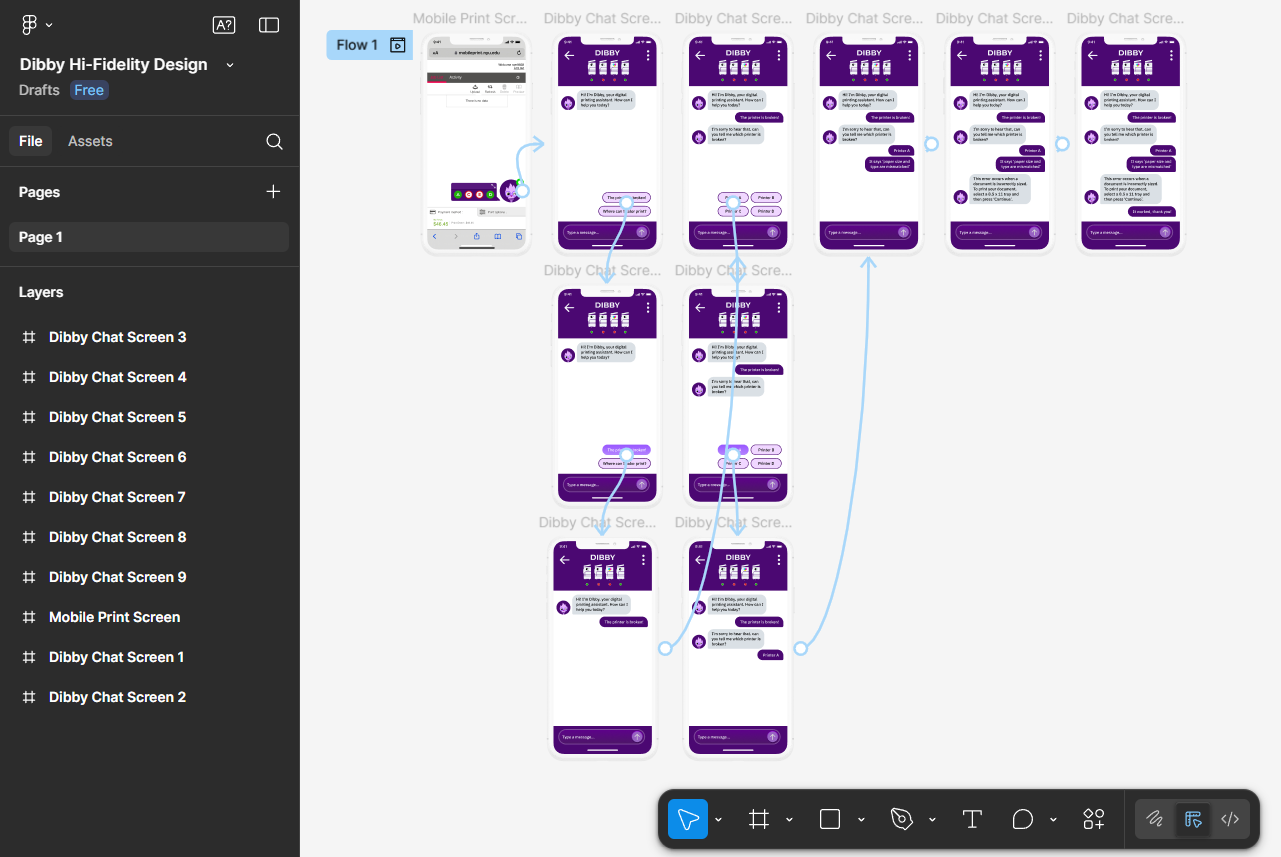
Solution
Focus on studying, not printing
Dibby is built to help students AND staff.
Dibby isn’t just about fixing printers--it’s about providing instant support,
boosting productivity, and shaping a better library experience.
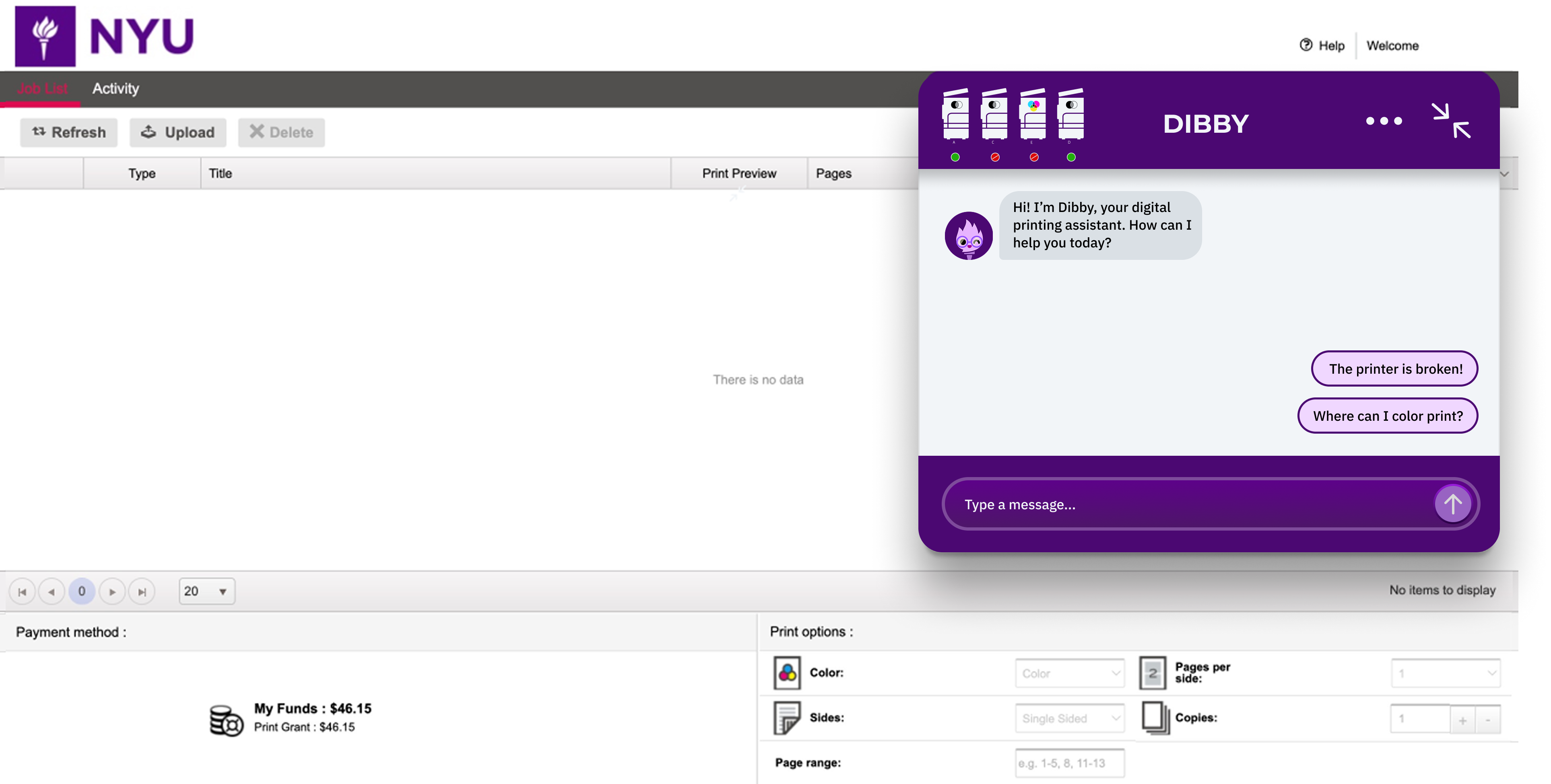
Impact
Won 1st Place & Audience Favorite, +75% successful troubleshooting rate, +54% increased reports to IT
Partnering, not replacing with AI
Dibby does not replace IT jobs. Our chatbot bridges the gap between students and IT staff, supporting clearer communication and creating actionable Trello tickets and big picture insights for our IT heroes. Dibby is low-cost and future-proof, requiring only a server to run on and minimal maintenance.